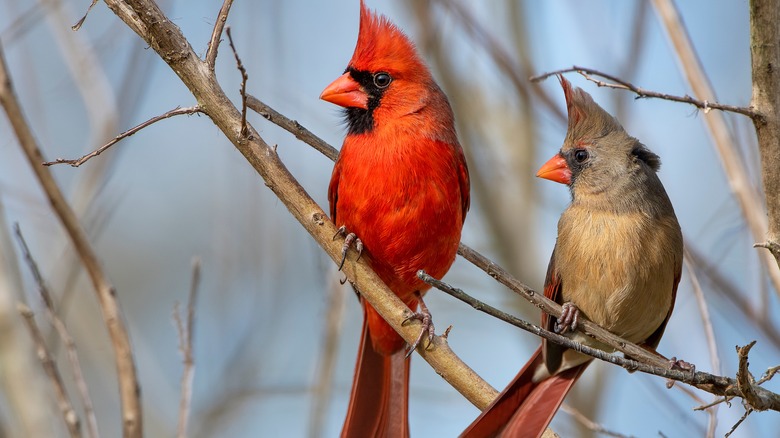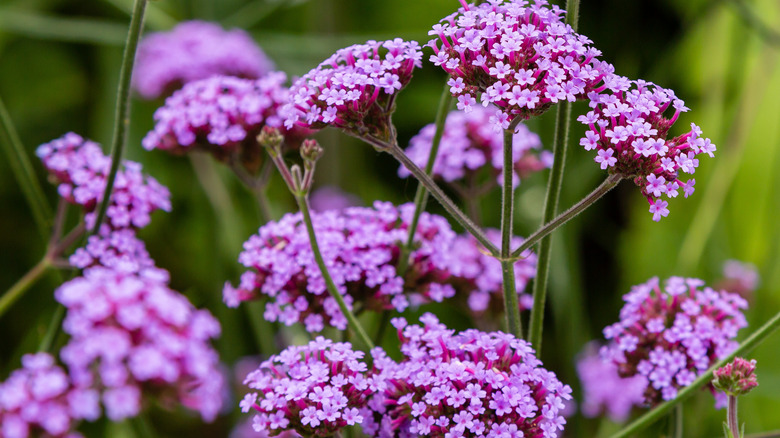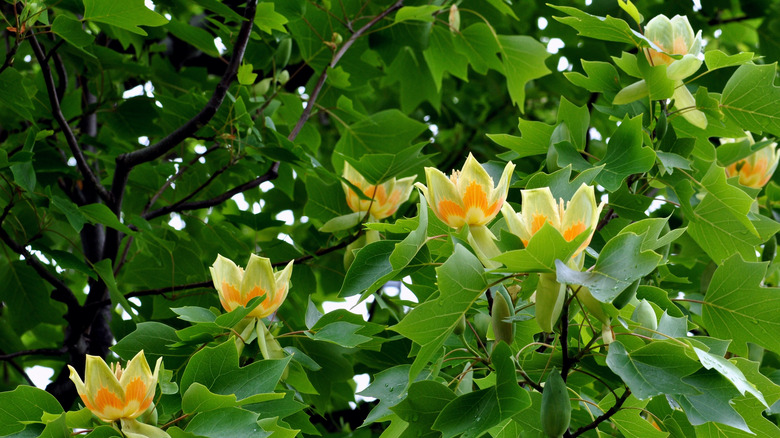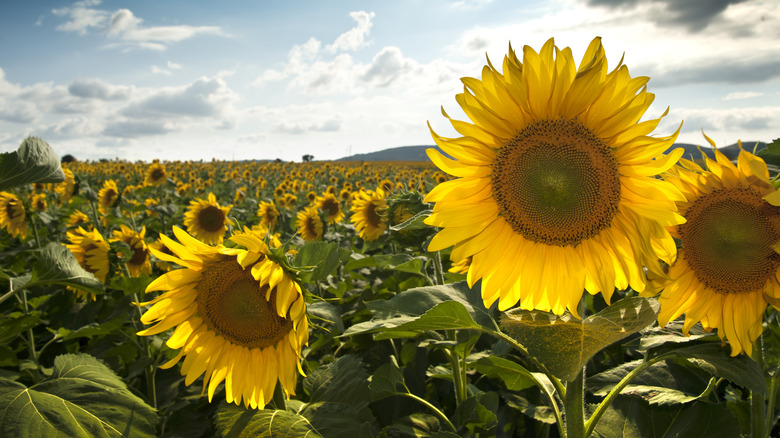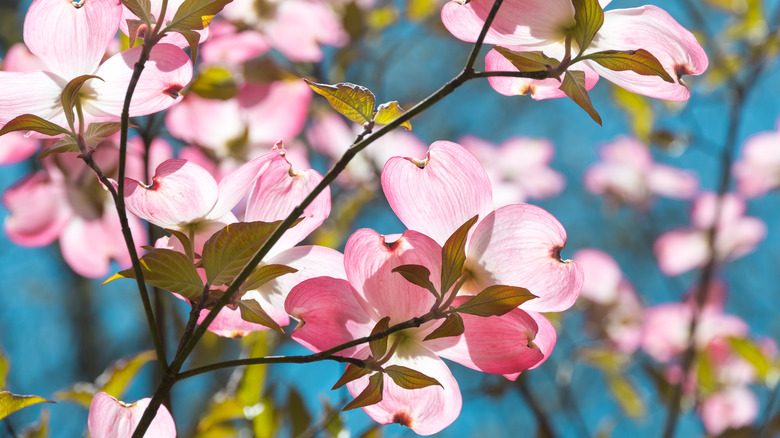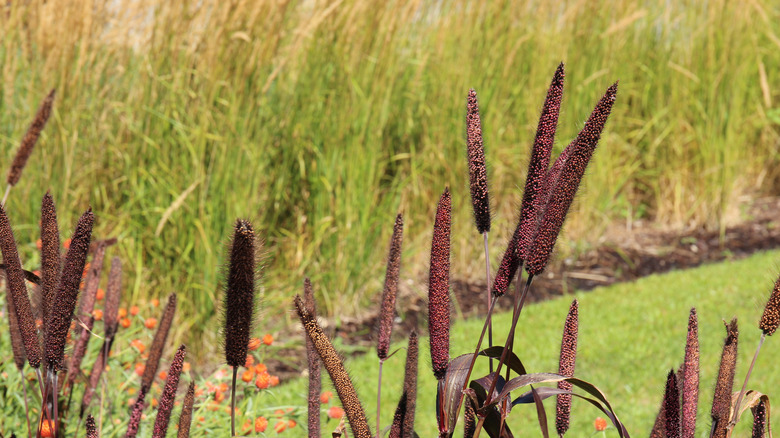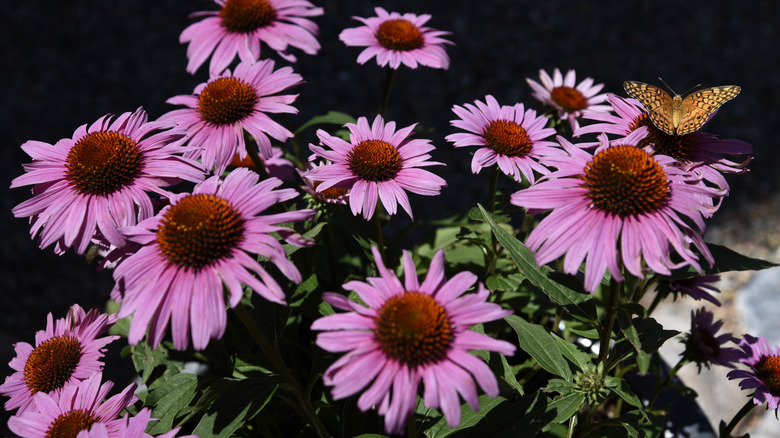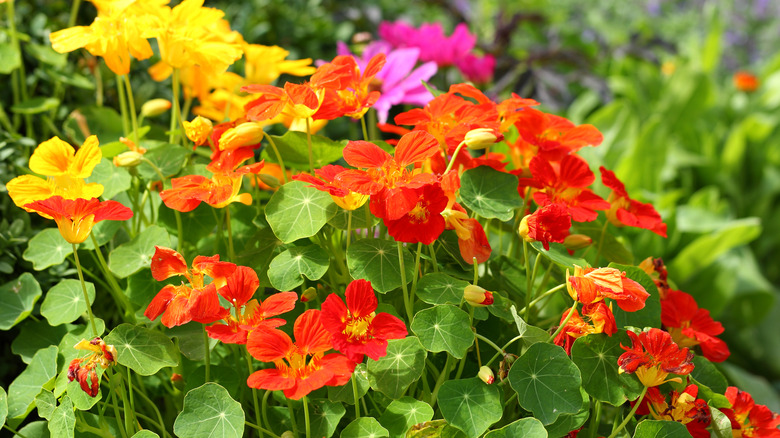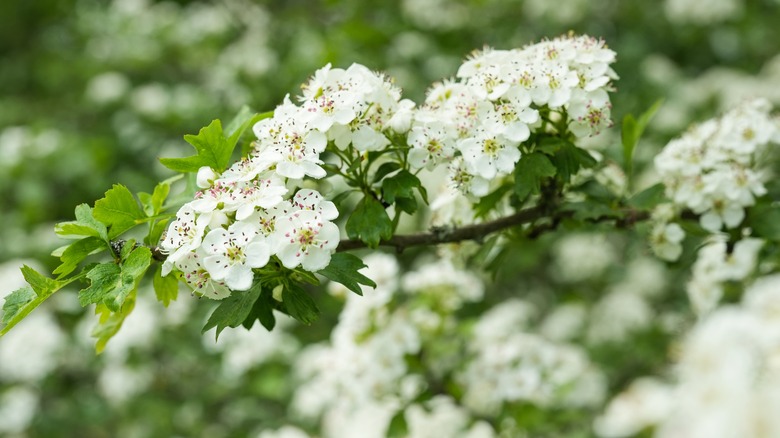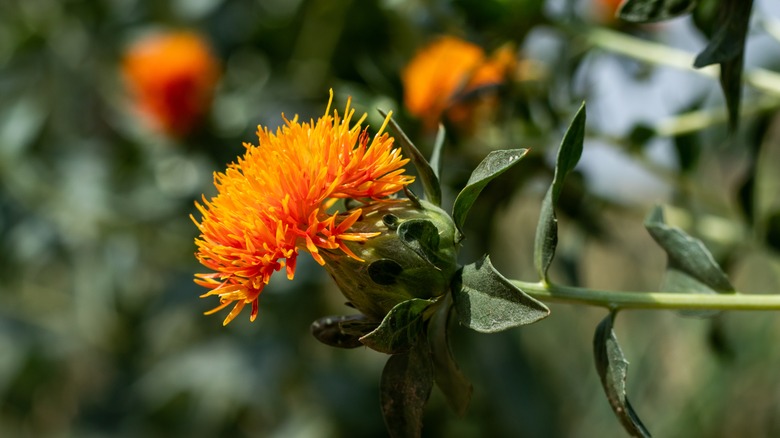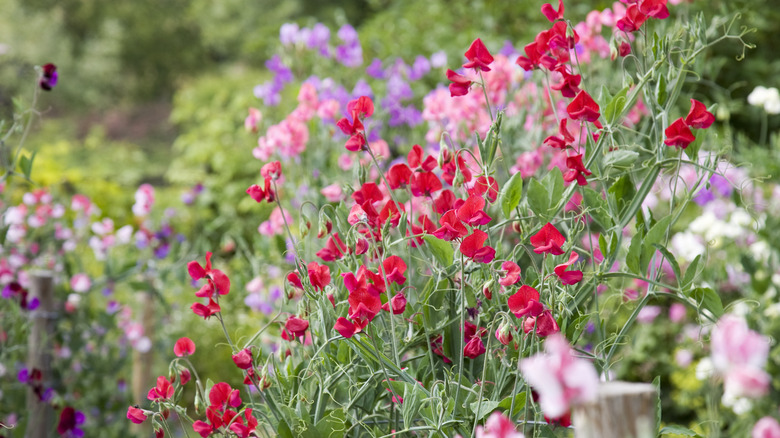Plant These Low-Maintenance Flowers To Attract More Cardinals To Your Yard
Though cardinals aren't rare in most of the United States, their vibrant colors still make them an exciting species to spot. Cardinals are common throughout much of the eastern and midwestern states. Because they don't migrate, if you live in one of these regions, you can spot the males' iconic red plumage amongst the pure white snow of winter and enjoy their vibrant feathers during the summer. However, that's only the case if you know how to lure them into your yard. For those who want to make spotting these feathered friends a more regular occurrence, attract cardinals to your garden by planting some low-maintenance flowers around your space.
A cardinals diet is varied and consists of seeds, insects, and berries. However, to lead them into your yard, you don't have to fill it with caterpillars, spiders, and centipedes; instead, focus on planting specific flowering plants so the birds can snack on the seeds. While you could also include berry bushes in your space, these birds seem to prefer seeds over berries. Filling your backyard with the foods cardinals love the most is almost guaranteed to make it the go-to spot, especially in the winter when food sources are more scarce.
Verbena (Verbenaceae)
Verbena is an annual flower that prefers full sun and well-draining soil. Many people love having this flower in their yard because of its vibrant colors, pleasant fragrance, and the ease of maintenance. This plant produces clusters of small purple, white, or pink flowers, with some varieties growing between 6 and 18 inches tall. Cardinals like the flowers and small seeds of this plant, so this provides a great food source for these birds from the spring to the fall.
Tulip poplar (Liriodendron tulipifera)
The tulip poplar is a deciduous tree that can grow up to 90 feet tall and that blooms yellow or orange flowers in the springtime. Once the tree is established, it needs little maintenance; a sunny spot and regular waterings will ensure the tree grows tall. The more sun the tree receives, the more it will flower and thrive. Tulip poplar seeds are high in fat and make a great food source in the winter for cardinals.
Sunflower (Helianthus)
Sunflowers can brighten your property with their vibrant yellow petals. Plant them in an area of the yard that gets full, direct sun for six to eight hours a day in well-draining soil. The flowers need little human interference to grow, as they only require weekly waterings. Cardinals are attracted to these flowers because of the seeds they produce and the insects they attract like aphids and beetles, which cardinals like to eat. The leaves also make great material for these birds' nests, so this is a flower that will definitely lead more of these bright red birds into your space.
Flowering dogwood (Cornus florida)
Dogwood trees bloom beautiful white or pale pink flowers in April and May. They prefer to be planted in a sunny spot with well-draining soil. They'll need water during the summer when they're actively flowering, but beyond that, maintenance is pretty low. Cardinals love dogwood flowers for their pollen, which is higher in the spring and summer. These birds also like dogwood berries, which are produced around the same time.
Purple majesty millet (Pennisetum glaucum)
Purple majesty millet will add a little bit of drama to your garden. The plant can grow 3 to 5 feet tall with dark purple leaves and 1-foot long seed spikes. This plant prefers full sun and can be drought tolerant but grows best with weekly waterings. It's the seeds of these summer and fall-blooming flowers that attract cardinals to your yard.
Purple coneflower (Echinacea)
The purple coneflower is a perennial that can grow between 2 and 5 feet tall and prefers full sun for at least six to eight hours a day. They're easy to care for and only need about an inch of watering each week. Cardinals are attracted to these summer-blooming flowers because of their seeds and the insects like aphids that are often attracted to the plant, as both provide a food source for the birds.
Nasturtium (Tropaeolum majus)
Gardeners love nasturtiums because the flowers bloom a vibrant color and have a pretty fragrance. Most nasturtiums are annuals, and there are both climbing and bush varieties available. Plant these flowers where they can get full sun for at least six hours and in well-draining soil, and give them regular weekly waterings. Cardinals love the seeds of these flowers, so they'll be attracted to nasturtium as a food source.
Hawthorn (Crataegus)
Hawthorn trees produce small and fragrant white flowers between March and June. Plant a Hawthorn tree in your yard where it will receive full sun in order to produce its signature blooms. Hawthorn is drought tolerant and needs little watering outside of occasional rain. Because these trees are dense, they provide great shelter, which will attract cardinals. The trees also produce berries that are ready to be eaten in the fall and seeds that the birds love as a food source.
Safflower (Carthamus tinctorius)
Safflowers are spiky orange and yellow flowers that will add plenty of texture to your garden. Plant them in well-draining soil and in a place where they can receive full sun. The flowers are low maintenance because they are resistant to drought, so moderate watering is all this plant needs. Cardinals love the seeds of safflowers, so planting this food source will surely bring them to your yard.
Sweet pea (Lathyrus odoratus)
The delicate and colorful sweet pea flower will be a beautiful addition to your garden. They're low maintenance as long as you plant these flowers in full sun and in well-draining soil to ensure that they thrive. Allow the flowers to receive at least six hours of direct sun, and soak them two or three times a week to keep them watered. Cardinals are attracted to the flowers' seeds as a food source.
